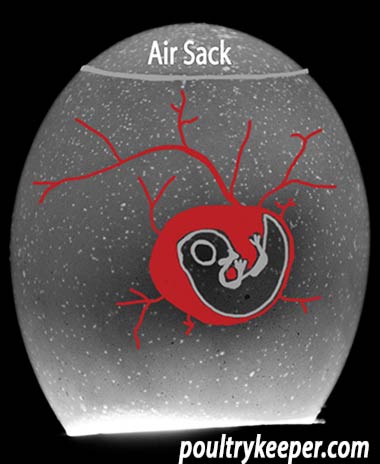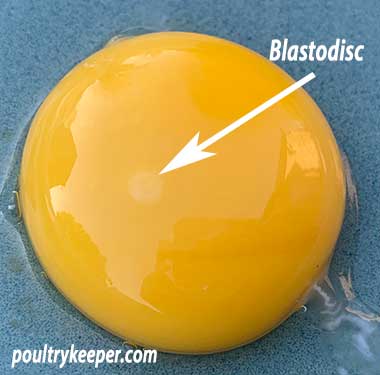Candling chicken eggs during incubation is a crucial step for monitoring embryo development and maximizing hatch rates. But knowing exactly when to candle can be confusing, especially for first-timers. In this comprehensive guide, we’ll walk through the key timing, what to look for, and how candling helps set your hatch up for success.
What is Egg Candling?
Candling is the process of shining a bright light through an egg to see inside it. It allows you to monitor fertility and embryo growth without cracking the shell.
Back in the day, candlelight was used to create the glow. But nowadays an LED flashlight or egg candler works perfectly. When done correctly, candling does not harm the developing chick.
Why Candle Eggs During Incubation?
Candling provides valuable information to improve hatch rates, including:
-
Identifying fertile eggs early on
-
Monitoring embryo development
-
Removing eggs that fail to progress so they don’t rot and damage other eggs
-
Adjusting incubation humidity based on air cell size
When is the Best Time to Candle Chicken Eggs?
Most experts recommend candling chicken eggs twice during the 21-day incubation period:
First Candling: Days 7-10
The first candling session is done around day 7-10 when embryos become visible. This confirms fertility and allows you to remove any eggs that are infertile or failed to develop.
A fertile egg will show a small dark spot (the embryo) with reddish spider-like veins radiating outward. You may even see some movement! Infertile eggs will look clear with no veins or embryo.
Candling now gives you an early assessment so eggs that aren’t progressing can be removed before rotting.
Second Candling: Days 14-17
The second candling around days 14-17 lets you check in on embryo growth. The chick should fill most of the egg by now. You’ll notice a dark interior with less light passing through.
Eggs that still look clear at this stage likely stopped developing and should be removed. Candling again mid-incubation prevents dead eggs from contaminating the healthy ones.
Candling Right Before Hatching
Some people also candle a third time just before hatching around day 18. However, it’s difficult to see much when the chick nearly fills the entire egg.
Unless you suspect incubation issues, candling at this point usually provides little added insight. The priority is minimizing disturbance to the chick as it prepares to hatch.
Step-By-Step Candling Instructions
Candling chicken eggs is a simple process when you follow these steps:
-
Wash hands before and after handling eggs to prevent contamination.
-
Work in a dark room and use the brightest light source available. An LED flashlight works perfectly.
-
Hold the large end of the egg gently against the light. Avoid excessive pressure.
-
Slowly rotate the egg and look for signs of development:
-
Fertile: Dark spot (embryo) with reddish veins radiating outward
-
Infertile: Clear interior with no spots or veins
-
-
Mark each egg with a pencil to track changes between candling sessions.
-
Work quickly and return eggs to the incubator immediately to maintain proper temperature and humidity.
What Do You Look for When Candling Chicken Eggs?
These are the key things to look for at different candling sessions:
Days 7-10:
-
Fertile eggs show a small dark embryo with spider-like veins
-
Infertile eggs are clear inside with no veins or spots
-
Signs of early embryo death: blood ring or no change from day 1
Days 14-17:
-
Fertile eggs appear nearly dark inside, chick fills most of the shell
-
Infertile eggs still look clear with little change
-
No embryo growth indicates a non-viable egg
Day 18 (optional):
-
Observe increased air cell size
-
Check embryo positioning pre-hatch
-
Difficult to see details as chick fills the egg
Why Proper Candling is Key for Incubation Success
Candling provides valuable information to improve your hatch rates. Here are some of the key benefits:
-
Identify fertile eggs early and remove ones that aren’t developing
-
Monitor embryo growth and catch any stalled development
-
Remove non-viable eggs before they rot and damage other eggs
-
Make humidity adjustments based on air cell size
-
Troubleshoot low hatch rates by catching issues mid-incubation
-
Minimize risk of contamination from cracked or rotten eggs
-
Reduce waste of incubator space on non-progressing eggs
Bottom line: candling improves efficiency and hatch rates. When done at the right times, it’s one of the most useful tools for incubation success.
Candling Tips to Maximize Results
Follow these best practices when candling to get the clearest view and cause minimal disruption:
-
Candle in a dark room using your brightest light source
-
Avoid candling eggs during the first few days when embryos are fragile
-
Don’t candle eggs after stopping turn days when chicks are in hatch position
-
Work quickly and return eggs to incubator immediately
-
Mark eggs with pencil between sessions for easy tracking
-
Handle eggs gently and don’t expose them to dramatic temperature changes
-
Expect some infertility and early deaths, especially with shipped eggs
-
Remove eggs that haven’t progressed by day 14 to avoid contamination
-
Always wash hands before and after handling eggs
Ready for Your Best Hatch Yet?
Now that you know exactly when and why to candle eggs, you can implement this useful technique for your next incubation. Candling provides valuable insights into what’s happening inside the shells so you can make adjustments for improved success.
When performed at the right times, candling helps you monitor embryo development, identify issues, remove non-viable eggs, adjust humidity and troubleshoot hatching problems. The result is higher hatch rates and healthier chicks!

Video: candling eggs at day-7
Sometimes, I find it challenging to identify a quitter, especially if it’s only the embryo that’s cloudy and not the whole egg. If I’m unsure, I will leave the egg until day 14, when it will be much easier to identify positively. I have taken a photo of such an egg for day 14, candling photos below and a video clip of another. It is cloudy and hasn’t developed veins like other eggs.
The most common cause for early embryonic deaths in eggs is rough handling, incorrect storage (storing too long, or at the wrong temperature), adverse genetic traits, or ageing of the breeder flock.
We can’t always avoid these (for example, when hatching eggs go through the postal system), but some can be corrected easily.
Embryo deaths later during incubation are all preventable with some care.
Nutrient deficiency of the breeder-flock, incorrect temperature, humidity (which causes egg weight loss during incubation) or egg turning inside your incubator, an infection caused by bacteria, and the breeder flock’s age is also essential.
Dirty eggs or an un-sterilised incubator are apparent sources of bacteria. Eggs should be clean before going into your incubator but remember bacteria can be transferred to eggs when you are candling if you haven’t washed your hands.
What is happening inside the egg?
The below should give you an idea of what is going on inside the egg by day 8. I have used black and white photography to highlight the contrast. There are probably a few more blood than I have drawn, but I think this gives you a good idea of what’s inside the egg.
The embryo has grown significantly, and the eye is usually visible (the darkest ‘blob’ you see in the egg). There are digits on the feet, the heart enclosed in the thoracic cavity, and the embryo starts to look more like a chick. Feathers begin to grow from day 8.
There is a sack attached to the embryo that is called the allantois. This goes around the back and head of the embryo and holds the waste. It is the yukky bit you’ll find left in the shell when the chick hatches. The yolk sack is now very red and full of blood vessels that go out into the albumen (egg white). The air sack at the broad end of the egg has increased in size.

 Next time you crack open an egg, look carefully for a small white patch on the surface of the yolk about 3mm in size. This is called the blastodisc. This is where the sperm joins the egg. Once fertilised, the blastodisc changes its name to the blastoderm.
Next time you crack open an egg, look carefully for a small white patch on the surface of the yolk about 3mm in size. This is called the blastodisc. This is where the sperm joins the egg. Once fertilised, the blastodisc changes its name to the blastoderm.
The blastoderm contains the chick’s genetic makeup, and it’s from here that the egg starts to develop. Blood vessels start to appear, stretching into the yolk to carry nutrients back to the embryo.
Of course, it would be great to be able to sex eggs before they hatch to save the heartache of raising unwanted male chicks! Various old wives tales circulate that say you can tell by circling a key or piece of metal on a string above an egg or that male chicks hatch from pointed eggs, females from round ended eggs. I’ve even seen ‘egg sexers‘ advertised on eBay where the seller says, “I don’t know how this works… it just does”.
Unfortunately, there is no proven way to tell the sex of an embryo in the egg, well, almost. The only proven way has been inserting a needle and taking a sample from inside the shell to see whether there was estrogen hormone present. Hardly a suitable method for the backyard keeper.
If there was an easy way, I’m sure the poultry industry would be using it now.
For autosexing breeds, or sex-linked crosses, you can determine the sex of day-old chicks, but for most pure breeds, you have to wait a while before you can sex them.
Incubator temperature should be maintained between 36 and 37.7°C (99° to 100°F); ideally, it should be set to average 37.5°C (99.5°F).
Too high a temperature is more damaging than too low a temperature. Mortality will increase if the incubation temperature drops below 35.6°C (96°F) or rises above 39.5°C (103°F) for several hours.
When to Candle Chicken Eggs | What is a Red Ring?
FAQ
When should you candle your chicken eggs?
Days 7-10: Candling eggs – Towards the middle of the incubation period at 7 to 10 days, eggs can be candled to determine if the embryos are growing properly.
Is 75% humidity too high for hatching eggs?
Ideal Humidity Ranges for Different Eggs
Chicken eggs: 35-55% during incubation, 65-75% during hatching. Duck eggs: 50-60% during incubation, 65-80% during hatching. Reptile eggs: Varies depending on the species, but generally between 60-70% is common.
What day is lockdown for chicken eggs?
